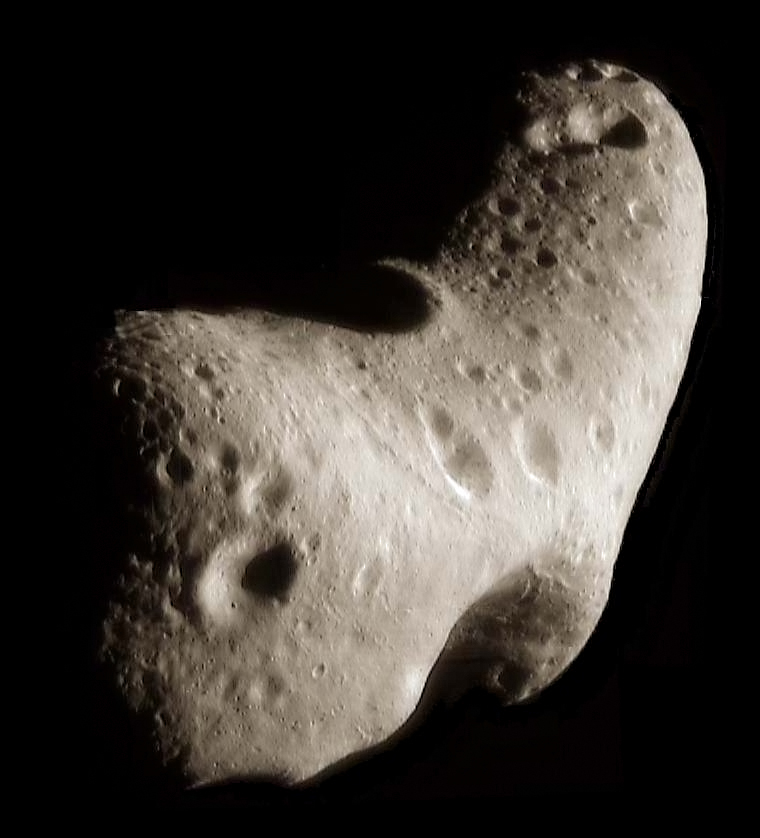
Twenty years ago, today, on 17 February 1996, NASA’s Near-Earth Asteroid Rendezvous (NEAR)—a name later adjusted to honor the planetary scientist Gene Shoemaker—rocketed away from Launch Complex (LC)-17B at Cape Canaveral Air Force Station, Fla., aboard a venerable Delta II booster. As its name implied, the octagonal-prism-shaped spacecraft sought to enhance our understanding of the nature of near-Earth asteroids, aiming to rendezvous and enter orbit around 433 Eros. In the days before launch, NASA noted that it would not only represent humanity’s first long-term, close-range inspection of the surface composition and physical properties of an asteroid, but would also mark the smallest Solar System object yet orbited by a spacecraft. By the time NEAR-Shoemaker’s mission ended on 12 February 2001, it had not only physically landed on Eros’ surface, but had also returned a wealth of data from a flyby of another asteroid, Mathilde.
The mission was conceived as the part of NASA’s Discovery Program—blazing a trail for numerous small-scale, low-cost exploration missions which followed, including Mars Pathfinder and the Mercury-bound MESSENGER, as well as the Kepler observatory and a flotilla of spacecraft destined to explore the Moon, comets, the solar wind, and asteroid belt objects—and wound up as its first-launched member. So successful was NEAR and its successors that the Discovery Program continues to this day, with the Mars-headed InSight lander now targeted for launch in the spring 2018 “window” and a recent “down-select” of proposals envisaging missions to Venus, the metallic asteroid Psyche, Jupiter’s “trojan” asteroid population, or an advanced Near-Earth Object Camera (NEOCam).
In its earliest incarnation, the seeds of the Discovery Program were sown in 1989, when the Solar System Exploration Division (SSED) at NASA Headquarters in Washington, D.C., spearheaded a series of workshops to define an exploration strategy through the end of the century. This included a Small Mission Program Group (SMPG), one of whose recommendations was that small spacecraft should be used to implement limited-scope missions, thereby marking a stark contrast from NASA’s previous approach of executing large-scale, “flagship” endeavors. However, the failure of Mars Observer—which had grossly overrun its budget and schedule constraints, before contact was lost, just ahead of its arrival at the Red Planet—imposed a considerable amount of skepticism, but a Science Working Group was formed and met several times during this period, proposing that the new program should be named “Discovery.”
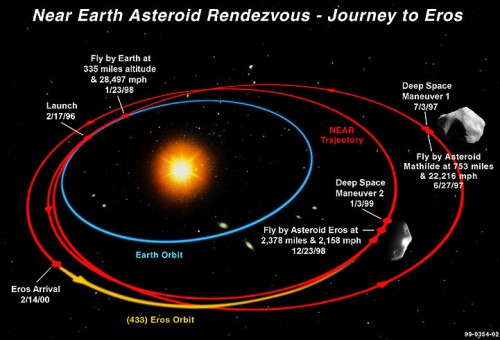
In the fall of 1990, SSED Director Dr. Wesley Huntress approached the group to focus on a specific mission and NEAR—which drew on a heritage of proposals already explored by NASA, as part of its Planetary Explorer program—was selected. Significantly, Gene Shoemaker had long added his voice to the call for an exploratory mission to a near-Earth asteroid, since it marked the next logical step and our closest celestial neighbor, beyond the Moon. Studies by the Johns Hopkins University Applied Physics Laboratory (JHU/APL) in Laurel, Md., and NASA’s Jet Propulsion Laboratory (JPL) in Pasadena, Calif., were completed in mid-1991, with the former suggesting that NEAR could be flown for just $110 million and the latter proposing a more conservative minimum of $150 million. With cost ceilings capped at $150 million, Dr. Huntress inserted the Discovery Program into the 1991 SSED Strategic Plan and NEAR was firmly baselined as its first implemented mission.
With the arrival of NASA Administrator Dan Goldin in early 1992, and his philosophy of “faster, better, cheaper” missions, the program had a firm advocate. By the end of that year, Dr. Robert Farquhar at JHU/APL identified 433 Eros—the largest-known near-Earth asteroid at that time, measuring about 21.4 x 7.0 x 7.0 miles (34.4 x 11.2 x 11.2 km) across its battered-potato-like body—as a suitable candidate for NEAR. Named for the ancient Greek god of love, Eros had been discovered almost a century earlier, in August 1898, and analyses of its celestial dynamics determined it to be a “Mars-crosser” asteroid, the first-known to come within the orbit of the Red Planet. More recent determinations have suggested that it could become an “Earth-crosser” in as little as a couple of million years, as well as a potential Earth impactor, comparable in size to the object which created the Chicxulub crater and led to the extinction of the dinosaurs.
“Asteroids may well be a key to understanding early Solar System evolution, just as a fossil can reveal information about events that happened long ago on Earth,” explained Dr. Huntress in the weeks preceding NEAR’s February 1996 launch. “NEAR is an historic mission in another respect, because it’s the first launch under NASA’s new philosophy of designing and building “cheaper, better, faster” missions.” In fact, the spacecraft—weighing 1,775 pounds (805 kg) at launch, equipped with a “windmill” of four solar panels and boasting a 123-pound (56 kg) payload of X-ray and gamma-ray spectrometers, a near-infrared imaging spectrograph, a multi-spectral camera with CCD imager, a laser rangefinder, and a magnetometer—had been created by JHU/APL in a mere 27 months, for just $108.4 million. “We have created a new paradigm for planetary missions,” said Dr. Stamtios Krimigis, head of the JHU/APL Space Department, “in which one can design to cost, without increasing risk, and still maximize the science capability, all in record time.” In fact, JHU/APL beame the first non-NASA space center to run a NASA planetary mission, conducting NEAR from an on-campus operations facility in Laurel, Md.
The mission’s launch window extended for 16 days, from 16 February through 2 March, and NEAR speared for the heavens at 3:43 p.m. EST on the 17th. After being boosted by the Delta II into an Earth-parking orbit, NEAR was injected by the rocket’s third stage onto a 35-month “Delta-V Earth Gravity Assist” (VEGA) trajectory to reach Eros. To enhance its simplicity and reliability, the spacecraft’s instruments and 5-foot-diameter (1.5-meter) high-gain antenna were “fixed”; in fact, its only deployable feature were the solar panels, whose 1,800-watt generation capability made NEAR the first solar-powered spacecraft ever to orbit beyond the orbit of Mars. The panels were unfurled and locked into position, without incident, about 22 minutes after launch.
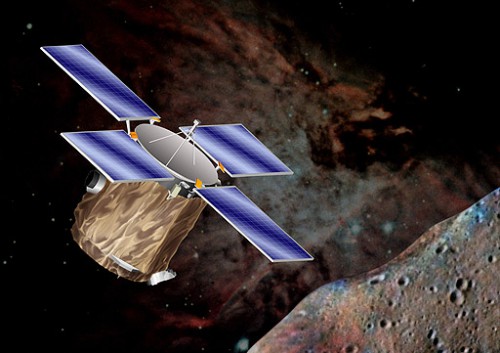
Although the real “prize”—the rendezvous with Eros—was still almost three years away, NEAR quickly began to secure its remarkable credentials. In addition to flying significantly under-budget, in November 1996 it won a pair of nationwide Popular Science awards, one of which honored its lightweight, all-plastic, and non-toxic battery. Several months later, on 27 June 1997, the spacecraft passed within 753 miles (1,212 km) of asteroid 253 Mathilde, which proved to be a carbon-rich body, as dark as fresh asphalt, reflecting barely a few percent of incident sunlight. Although NEAR was only able to image one hemisphere during its 25-minute flyby, it marked the first time that a “C-type” (or “carbonaceous”) asteroid had been directly explored and more than 500 images revealed large craters revealed numerous large craters. Following the passage of the Jupiter-headed Galileo orbiter within close range of Gaspra and Ida a few years earlier, NEAR’s Mathilde encounter marked only the third asteroid in history to be imaged by a spacecraft from a nearby distance. It also marked the first major science return of the Discovery Program, coming just a few days before the arrival of Mars Pathfinder at the Red Planet.
Only one instrument, the multi-spectral imager, was used during the flyby, in order to better conserve electrical power from the solar arrays. Individual craters were named for coal fields, with the two largest basins—the 18.2-mile-wide (29.3 km) Ishikari and the 20.7-mile-wide (33.4 km) Karoo—as wide as the asteroid’s average radius. In fact, Mathilde’s mean diameter of 33 miles (52 km) turned out to be somewhat smaller than predicted and its extremely slow rotation rate of just 17.4 days posed an additional mystery. Observations of the darkened crater interiors revealed uniform blackness and no trace of layering, indicative of a homogeneous interior. “The Mathilde encounter was one of the most successful flybys of all time,” said Dr. Robert Farquhar of JHU/APL, then serving as NEAR Mission Director. “We got images that were far better than we thought possible, especially since the spacecraft was not designed for a fast flyby.”
Less than a week after passing Mathilde, on 3 July, NEAR fired its hydrazine/nitrogen tetroxide-fueled main engine for 11 minutes to redirect the spacecraft towards a rendezvous with Earth, picking up a gravitational push to reach Eros. During this “inward” leg of its trajectory, the spacecraft serendipitously observed a major gamma-ray burst, following a software adjustment to its gamma-ray spectrometer. At length, on 22-23 January 1998, NEAR became the first interplanetary spacecraft ever to be seen with the naked eye, as it sped over the Pacific Ocean at 20,000 mph (32,000 km/h), achieving closest approach about 336 miles (540 km) over south-western Iran. The gravity-assist served to alter the inclination from 0.5 degrees to 10.2 degrees and reduced the aphelion distance from 2.17 to 1.77 Astronomical Units (AU)—200 million miles (325 million km) to 165 million miles (265 million km)—placing the spacecraft on-target to encounter Eros in early January 1999. This provided NEAR with a trajectory that virtually mirrored the inclination and aphelion distance of Eros’ orbit, thus the magnitude of the rendezvous maneuver.
However, all did not go as planned in the final weeks. On the evening of 20 December 1998, whilst still about 150,000 miles (242,000 km) from Eros, a planned “burn” of the spacecraft’s bi-propellant main engine to increase its inbound velocity was unsuccessful. The burn was aborted after just a few seconds, having “exceeded certain safety limits associated with the on-board system that autonomously controls the spacecraft.” The spacecraft defaulted to “safe mode,” but had expended 64 pounds (29 kg) of propellant and begun tumbling. The propellant wastage alone had reduced its margins to near-zero. Late on the 21st, the Deep Space Network (DSN) detected a weak signal from NEAR and eventually—when the ailing spacecraft performed a pre-programmed 360-degree sweep, searching for a signal from Earth—command capability was restored. “It was the longest 27 hours of my life,” recalled NEAR Project Manager Tom Coughlin of JHU/APL.
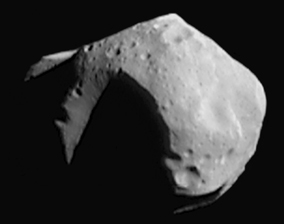
The mission had come close to abject failure. Initial efforts to reprioritize the upcoming tasks to still achieve a rendezvous with Eros on 10 January 1999 were ultimately fruitless, with insufficient time remaining to plan a “safe,” new burn. The only option was to attempt a flyby of the asteroid. With impressive pace, the NEAR team devised and implemented a command sequence for a 23 December 1998 flyby to obtain imagery, near-infrared spectra, and magnetic field measurements during a period of just two hours, before Eros moved out of range. At 1:43 p.m. EST, NEAR passed within 2,375 miles (3,830 km) of its center of mass, revealing it to be smaller than expected, with at least two medium-sized craters, a 12-mile-long (20 km) “ridge” and a surface density approximately comparable to that of Earth’s crust. It was revealed to rotate every 5.3 hours and no evidence of any attendant satellites was discernable. Two-thirds of the asteroid’s rugged surface were imaged and 222 photographs were returned.
“The flyby … has given us fundamental information that will help us plan a better orbital mission at Eros,” said NEAR Project Scientist Andrew Cheng of JHU/APL. “It has taken some of the risk out of our orbit-insertion maneuver and early operations.” Robert Farquhar added that the spacecraft was saved by “our resilient mission design” and that, had it not been for the contingency planning, “we wouldn’t have recovered.”
A little more than a week later, on 3 January 1999, the spacecraft successfully executed a 24-minute burn to increase its velocity by 2,100 mph (3,380 km/h) and establish the proper conditions for a revised orbital mission at Eros, beginning in mid-February 2000. It was expected that imagery from orbit would result in about 200 times better resolution than was possible during the flyby. Additional burns during the course of the year, including one in August 1999, served to refine NEAR’s velocity to about 180 mph (300 km/h) with respect to Eros. Still, the spacecraft faced ongoing trials: entering safe mode briefly in March, due to a flight computer reset, and facing the implications of the much-hyped Y2K computer bug in the dying days and weeks of the 20th century.
Throughout January 2000, NEAR acquired dozens of images of Eros and, following a scrubbed rendezvous burn, which left the spacecraft in temporary “safe hold,” a 90-second braking maneuver was successfully conducted on 3 February, followed by another on the 8th, to draw closer to its quarry. Late on the 13th, the rendezvous sequence got underway, with an initial “low-phase flyby,” which placed NEAR directly between the Sun and Eros and permitted mineralogical observations of the asteroid’s northern half under optimal lighting conditions. Fittingly, it was on St. Valentine’s Day, at 10:33 a.m. EST, that NEAR slipped smoothly into an elliptical 199 x 227-mile (321 x 366 km) orbit around the asteroid which bore the name of the ancient Greek god of love.
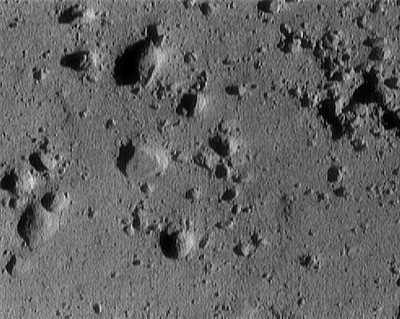
“NEAR is now the first spacecraft to successfully lock into orbit around an asteroid,” said Dr. Farquhar. “We’re making history here today.” A month later, on 14 March, the mission’s very name was extended to include “Shoemaker,” honoring Gene Shoemaker (1928-1997), whose decades of research on asteroids was capped in the mid-1980s by membership of a working group which saw the genesis of the NEAR mission design. Described as “an inspirational, charismatic pioneer” by Dr. Carl Pilcher, then-head of Solar System Exploration at NASA Headquarters, the name was “a fitting tribute” to Shoemaker, since NEAR’s mission would “expand on all he taught us about asteroids, comets and the origins of our Solar System.”
Over the following months, the newly-renamed NEAR-Shoemaker’s orbit was gradually adjusted to close in on Eros and perform observations of unprecedented quality. By the beginning of March, it had reached a circular orbit of 124 miles (200 km) and had drawn yet closer to 62 miles (100 km) by mid-April. This enabled the spacecraft to acquire sharper images of its abundant geology, as well as revealing more detail about its elemental composition, via the X-ray and gamma-ray spectrometers. By month’s end, NEAR-Shoemaker had reached an “ideal” circular orbit of 31 miles (50 km) over Eros’ north and south poles, where it remained for more than eight weeks, offering the X-ray and gamma-ray instrumentation, as well as the laser rangefinder, the opportunity to gather data.
Despite suffering a power surge in its near-infrared spectrometer, the mission progressed exceptionally smoothly and the spacecraft’s instruments had completed a global “mosaic” of Eros by the end of June. This allowed a renewed focus upon specific details within the asteroid’s craters, ridges, grooves, boulders, and troughs. Heading into July, as the navigation team became more confident in their ability to “better read” the orbital dynamics of the asteroid, a new maneuver lowered NEAR-Shoemaker’s orbit even nearer to just 22 miles (35 km), where it spent several days performing gravity field measurements. Returning back to an orbit of around 62 miles (100 km) in late August and into September, the spacecraft observed Eros from further afield, revealing “square” craters and other intriguing surface features, before again drawing closer and on 26 October performing a “low-altitude flyover,” passing just 3.3 miles (5.3 km) from the surface.
And this was NEAR-Shoemaker’s nearest-yet passge to Eros. Further X-ray and gamma-ray mapping through December 2000 and into January 2001 was conducted from 22 miles (35 km), but the plucky little spacecraft certainly had more life in it. At the tail end of January, it literally went nose-to-nose with the peanut-shaped asteroid, brushing the “toe” end at a distance of 1.7 miles (2.7 km) and returning extraordinarily detailed views of the surface. Shortly thereafter, NEAR-Shoemaker was returned to 22 miles (35 km) to begin preparations for its final descent and anticipated soft-landing on Eros’ surface.
“This is a bonus,” Dr. Farquhar had commented in the days leading up to the soft-landing attempt. “The descent maneuvers are the most complicated we’ve ever tried and because the spacecraft is an orbiter, that wasn’t designed to land, there is only the smallest chance it will survive on the surface of Eros.” However, he added that the potential scientific and engineering data return made the effort “worth the risk.”
On 12 February 2001, after five years traveled and 196 million miles (315 million km) from Earth, NEAR-Shoemaker pressed into a grueling 4.5-hour series of four braking maneuvers. As it descended, its outward-facing camera was pointed “down,” acquiring a couple of images every minute, with the touchdown aim-point close to Himeros, a 6-mile-wide (10 km), saddle-like depression feature. Thought to represent part of a very large impact crater, the approach to Himeros allowed the spacecraft to photograph its interior and its heavily-cratered environs, which one imaging team member described as “a great opportunity to look at two very distinct terrains.” Alighting on the surface at 3:02:10 p.m. EST, cruising at a gentle 4 mph (6.4 km/h), its closest image was a mere 394 feet (120 meters) from Eros and covered an area of about 20 feet (6 meters).
It marked the first attempt in history to land on an asteroid. Despite the jubilation, however, Dr. Farquhar was right: The landing ultimately sounded the beginning of the end for NEAR-Shoemaker. Although the spacecraft remained operational on the surface, and landed barely 650 feet (200 meters) from its predicted point, there were no plans to return it to orbit. Extended until the end of February, in order to permit the return of gamma-ray data from the surface, the mission which achieved multiple firsts in rendezvousing, orbiting, and landing on an asteroid concluded in spectacular fashion. In its last images, NEAR-Shoemaker returned stunning perspectives of fractured boulders, a dust-filled crater the size of a football field, and a collapsed area of surface.
All of this has enhanced our knowledge of this remarkable little world and whetted the appetites of the next generation of asteroidal explorers.
Be sure to “Like” AmericaSpace on Facebook and follow us on Twitter: @AmericaSpace




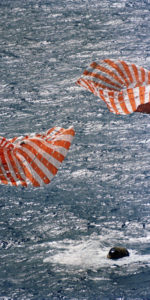
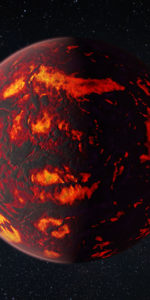
You can read more about NEAR and see more pictures at this official website:
http://near.jhuapl.edu/index.html